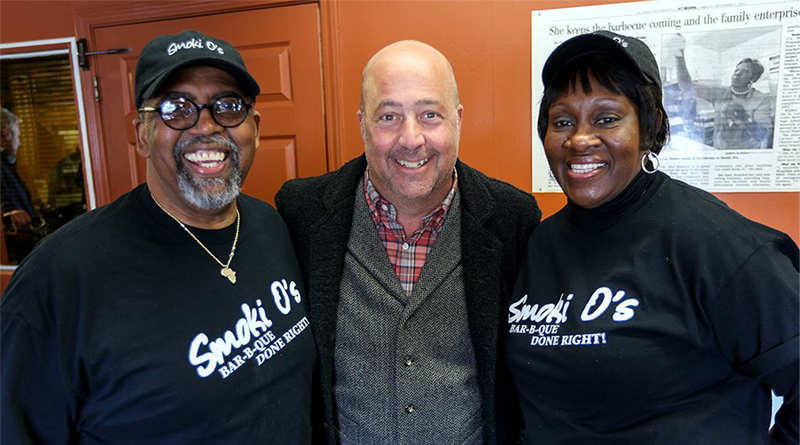This was written by Ethan, one of our student interns. The opinions expressed herein do not reflect those of Civitas other than respect for the value of open dialogue.
The other day, as my family and I were searching for something to watch on TV, we stumbled upon a show celebrating the best food in St. Louis. Watching the show led to a rabbit hole of food shows about my hometown. After bingeing specials touting the biggest, best and most bizarre food, I began to realize how little of St. Louis I’ve explored, and how an outsider’s perspective can reveal biases I have about my own city.
All of the episodes featured stereotypical St. Louis foods: barbeque, pizza, toasted ravioli and gooey butter cake. This coincided with visits to traditional St. Louis establishments like Charlie Gitto’s, Crown Candy Kitchen and Pappy’s. Another restaurant that popped up multiple times was Smoki O’s Bar-B-Que, a Black-owned business which Bizarre Foods’ host Andrew Zimmern said serves one of his favorite foods of all time: snoots, which is meat from the nose of a pig. Snoots are not usually served at barbeque restaurants, as they require a lot of extra preparation. They have a texture and taste similar to bacon smothered in barbeque sauce. Earline and Otis Walker opened Smoki O’s in 1997 and it’s located on Broadway, just north of the Arch.
As I continued to watch these St. Louis specials, I began to notice a pattern. Almost all of the restaurants that I didn’t recognize are located in the north side of the city. I’m a white man and have lived in wealthy, white suburbs for most of my life. While I thought I was aware of the best food in the city, these shows highlighted that I was only truly aware of a small part of St. Louis. This problem, like many others in the St. Louis area, stems from racial division. I’ve begun to realize that, without even knowing it, I contribute to this division every day. When my family and I look for new restaurants, we look at the places that are closest to us, which are typically white-owned and in white, wealthy areas. We very rarely leave our bubble to explore the rest of the city, which means we aren’t spending money in other communities, keeping wealth out of communities of color.
Shows like the ones I watched provide a window into what it’s like to be a tourist in St. Louis. Tourists don’t have the inherent biases about the city that residents like me have. They’re more likely to explore all parts of town. The shows did a good job of showing places throughout the St. Louis area that provide delicious food and excellent service. Encouraging people to shop at Black-owned businesses is important, but it can be vague. Instead, telling the audience to try a specific restaurant like Smoki O’s provides an actionable step people can take to support a Black-owned business.
Inspired by these shows, my family and I decided to go to Smoki O’s and try the snoots. Since their dining room was closed due to Covid-19, my brother and I picked up takeout. As soon as we passed the Arch heading north, I noticed a decrease in road quality. There were potholes everywhere, and the streets were nearly empty. Once we got to Smoki O’s, I wasn’t sure we were in the right place. The restaurant seemed like it was the only inhabited building on the block. However, once I went inside, it seemed like another world. Of course, I immediately noticed the smell of savory barbeque. The walls were covered in awards, newspaper clippings and pictures from Andrew Zimmern’s visit. Customers and employees alike welcomed me. The food was delicious, and I highly recommend the brisket and mac and cheese. I was happy to support a St. Louis institution, and while I’m sure my visit alone won’t change much, I encourage you to try Smoki O’s if you’re in the mood for barbeque. It’s a simple first step, and if we all take it, we can start to make some positive change in our city.


Pingback:Index of 2021 Intern Student Blog Posts - CIVITAS-STL